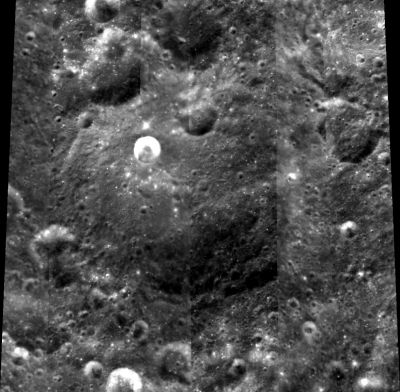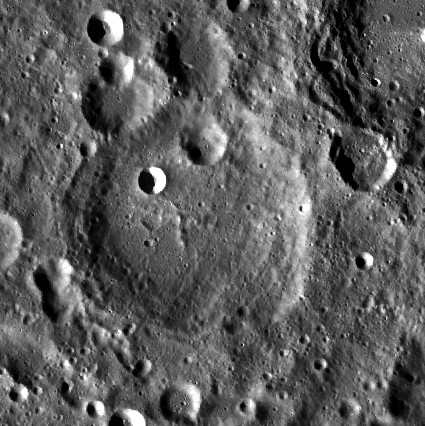Difference between revisions of "Kurchatov"
| Line 7: | Line 7: | ||
[http://www.lpod.org/coppermine/displayimage.php?pid=1499&fullsize=1 [[Image:Normal_kurchatov-clem1~0.jpg|external image normal_kurchatov-clem1~0.jpg]]][[Image:Kurchatov.jpg|Kurchatov.jpg]]<br /> ''left:'' [http://lpod.org/coppermine/displayimage.php?pos=-1499 //Clementine//] ''. right: '''LROC''''' . Nearby '''[http://the-moon.us/wiki/Wiener Wiener]''' is seen at top right corner.<br /> | [http://www.lpod.org/coppermine/displayimage.php?pid=1499&fullsize=1 [[Image:Normal_kurchatov-clem1~0.jpg|external image normal_kurchatov-clem1~0.jpg]]][[Image:Kurchatov.jpg|Kurchatov.jpg]]<br /> ''left:'' [http://lpod.org/coppermine/displayimage.php?pos=-1499 //Clementine//] ''. right: '''LROC''''' . Nearby '''[http://the-moon.us/wiki/Wiener Wiener]''' is seen at top right corner.<br /> | ||
==Images== | ==Images== | ||
| − | [http://www.lpod.org/coppermine/thumbnails.php?album=search&type=full&search=Kurchatov LPOD Photo Gallery] [http://www.lpi.usra.edu/resources/lunar_orbiter/bin/srch_nam.shtml?Kurchatov%7C0 Lunar Orbiter Images] [http://www.lpi.usra.edu/resources/apollo/search/feature/?feature=Kurchatov Apollo Images]<br /> - '''Kurchatov''' was photographed during the mission of Apollo 13. It is noticeable near the upper right corner of frame [http://www.lpi.usra.edu/resources/apollo/frame/?AS13-60-8653 AS13-60-8653]. '''Kurchatov''' and nearby '''Wiener''' could be the most northern farside craters captured on Apollo-related ''Hasselblad'' color film.( The honor goes to dark-floored '''[http://the-moon.us/wiki/Campbell Campbell]''' in the same image.<span class="membersnap">- | + | [http://www.lpod.org/coppermine/thumbnails.php?album=search&type=full&search=Kurchatov LPOD Photo Gallery] [http://www.lpi.usra.edu/resources/lunar_orbiter/bin/srch_nam.shtml?Kurchatov%7C0 Lunar Orbiter Images] [http://www.lpi.usra.edu/resources/apollo/search/feature/?feature=Kurchatov Apollo Images]<br /> - '''Kurchatov''' was photographed during the mission of Apollo 13. It is noticeable near the upper right corner of frame [http://www.lpi.usra.edu/resources/apollo/frame/?AS13-60-8653 AS13-60-8653]. '''Kurchatov''' and nearby '''Wiener''' could be the most northern farside craters captured on Apollo-related ''Hasselblad'' color film.( The honor goes to dark-floored '''[http://the-moon.us/wiki/Campbell Campbell]''' in the same image.<span class="membersnap">- Nunki <small>Sep 6, 2011</small></span>)<br /> - Research: Danny Caes.<br /> <br /> <br /> |
==Maps== | ==Maps== | ||
''([http://the-moon.us/wiki/LAC%20zone LAC zone] 31C1)'' [http://planetarynames.wr.usgs.gov/images/Lunar/lac_31.pdf USGS Digital Nomenclature Atlas]<br /> <br /> | ''([http://the-moon.us/wiki/LAC%20zone LAC zone] 31C1)'' [http://planetarynames.wr.usgs.gov/images/Lunar/lac_31.pdf USGS Digital Nomenclature Atlas]<br /> <br /> | ||
Latest revision as of 21:19, 16 April 2018
Contents
Kurchatov
| Lat: 38.3°N, Long: 142.1°E, Diam: 106 km, Depth: km, Rükl: (farside) |


left: //Clementine// . right: LROC . Nearby Wiener is seen at top right corner.
Images
LPOD Photo Gallery Lunar Orbiter Images Apollo Images
- Kurchatov was photographed during the mission of Apollo 13. It is noticeable near the upper right corner of frame AS13-60-8653. Kurchatov and nearby Wiener could be the most northern farside craters captured on Apollo-related Hasselblad color film.( The honor goes to dark-floored Campbell in the same image.- Nunki Sep 6, 2011)
- Research: Danny Caes.
Maps
(LAC zone 31C1) USGS Digital Nomenclature Atlas
Description
Description: Wikipedia
Additional Information
Nomenclature
- Igor' Vasil'evich Kurchatov; Soviet nuclear physicist (1903-1960).
- Discovered in Lunik 3 imaging of farside and named in Atlas of the Far Side of the Moon and approved by the IAU in 1961 (Whitaker, p 232).
LPOD Articles
Bibliography